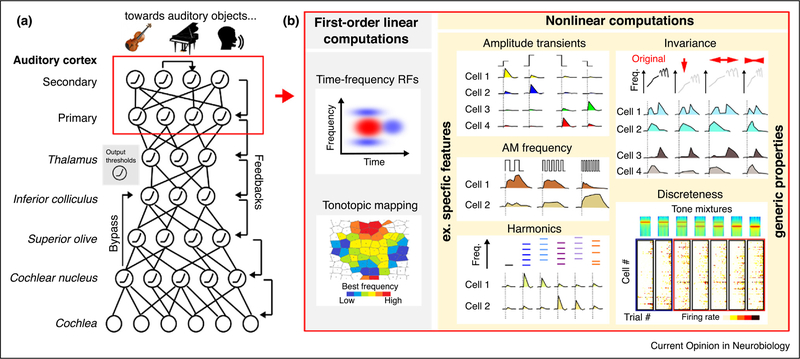Figure 1.
Structuring of auditory information via nonlinear computations in the auditory cortex. (a) Throughout the auditory system raw cochlear inputs are structured into biologically relevant percepts (auditory objects). This transformation requires a complex ensemble of non-linear computations, which we here schematize as a multilayer network linking simple nonlinearities (e.g. spike threshold) with an elaborate connection graph that includes feedforward, feedback and lateral connections. Interestingly, appropriately trained multilayer networks (Deep Learning) were recently demonstrated to boost performance on artificial perceptual tasks such as speech recognition. (b) Beyond simple computations such as spatially organized preference for particular frequency ranges (left), the auditory cortex displays a number of non-linear computations. These leads to the emergence of neurons sensitive to specific features, as sketched in the middle column, including sound onsets and offsets of particular amplitude [26••], amplitude modulation (AM) frequencies [25], or even harmonicity (at least in primates) [30••]. Also, generic response properties, such as invariance to modification of basic acoustic parameters as sketched in the top right graph [31] and discrete coordinated population response switches (bottom right) (data from [33]), indicate that these nonlinear computations endow cortical representations with some of the expected properties of auditory object representations.

